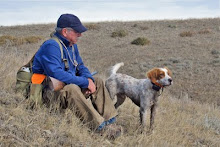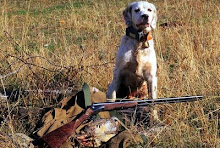
I have had several bird dogs quilled and they have learned after the first experience to stay back from the porky and will usually point them from a safe distance. Some 'sharp' breeds will repeatedly attack porcupines, unfortunately. They don't learn to leave them alone, probably wanting to extract a measure of revenge for past pain suffered.
The best tools for repairing the damage to a dog are a Leatherman or a pair of hemostats. It is best to immobilize the dog - a dog in pain is likely to struggle and cause quill breakage during removal, and may bite you. Cover the dog's eyes, and securely clamp each quill close to the skin and pull it straight out. After removing all that can be removed in the field, I consider it best to take the dog immediately to the vet to insure removal of ALL quills and partial, broken bits, especially if there are quills in the tongue, gums, or around the eyes - all of which are very common in quilled dogs. The vet will remove them under sedative or anesthesia and probably also administer an antibiotic to prevent infection.
So. Do you shoot porcupines? I did shoot one once, but no longer. Dennis Kavanaugh says that a dead porky is very attractive to dogs - they want to roll in the mess, and are quilled by the dead quill pig. Even in death they are a hazard.









No comments:
Post a Comment